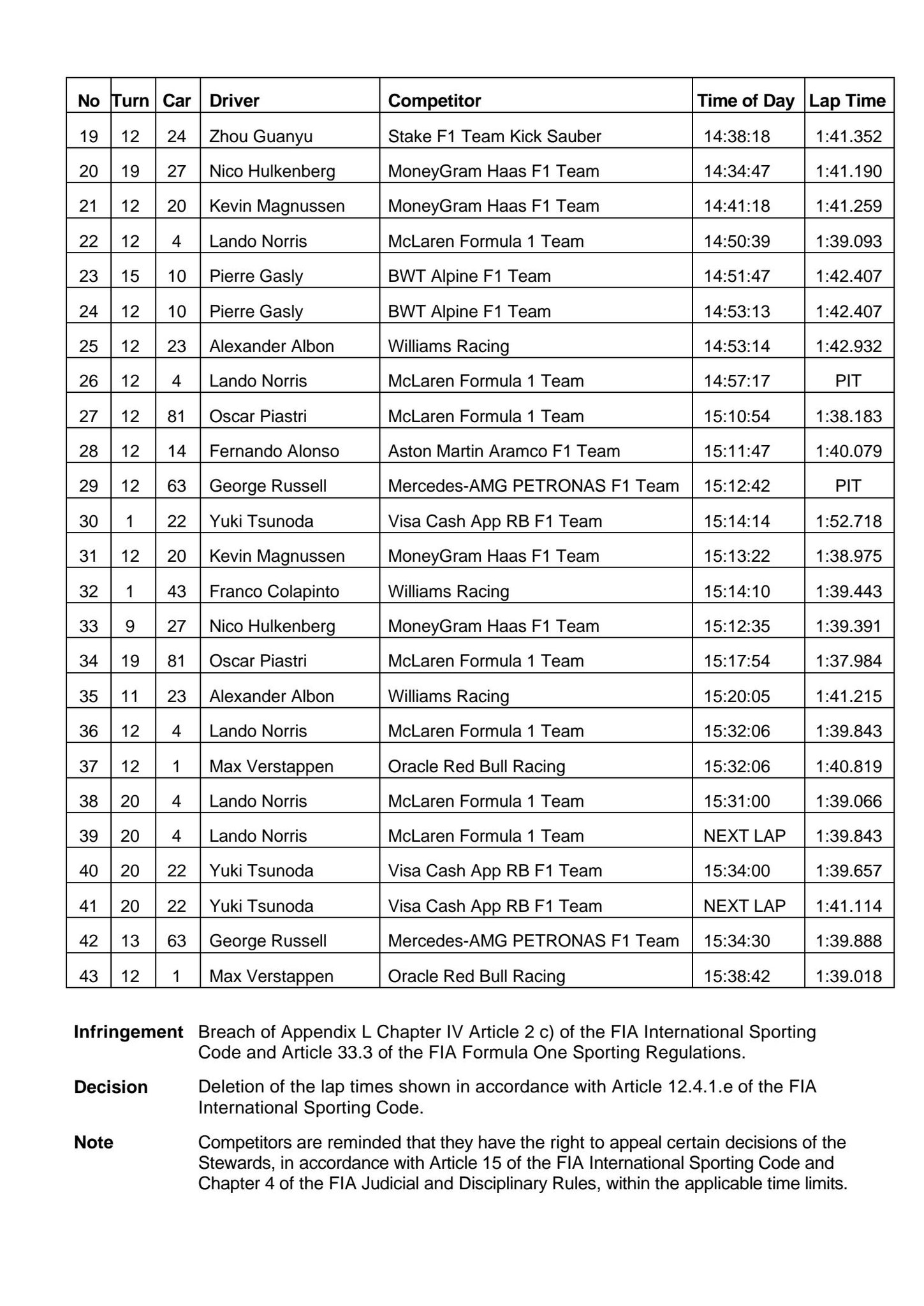dialtone wrote: ↑21 Oct 2024, 19:05
venkyhere wrote: ↑21 Oct 2024, 17:14
As the laps tick by :
a) the car is expected to gain performance from loss of fuel mass
b) the car is expected to lose performance as reducing fuel mass means the ride height increases and downforce reduces
c) the car is expected to lose performance from tyre degradation/graining-phase etc
That's not how it works.
(a) correct
(b) not correct, in fact the opposite
(c) correct
Fuel mass is only 100kg tops out of 800kg from the mass of the car plus all the downforce which is at least comparable to the weight of the car at high speed.
Over and over you see cars going faster through corners with less fuel onboard, they slide less due to less centrifugal force/inertia (Q=mv and m is decreasing) and, and since they go faster they generate more downforce through the corner which results in them being also lower on the ground.
Hmm... I understand my folly.
b) the car is expected to gain performance as reducing fuel mass means
lower lateral inertia allowing faster cornering speeds, resulting in more downforce (several times more than the weight of fuel lost), reducing ride height, which in turn increases downforce, which in turn increases grip further.
Which in turn means, this extent of this 'b' effect is really going to be governed by suspension stiffness. And even suspension stiffness isn't constant, either, right ? it's progressive, ie, will depend on how much the torsion springs are already twisted (pre loaded) ?
So 'performance loss' (if it occurs) even in ground effect era (where ride height is super sensitive) still is coming only from reducing tyre grip. There are races where cars have no performance loss at all (actually increasing performance) when tyre grip doesn't reduce much.
Now the golden question :
why does tyre 'deg' as the laps go ?
AFAIK graining is from rubber shearing off the contact surface due to temporary adhesion with tarmac and resulting ripping off of surface of the tyre (reducing circumference), exposing 'underneath' layers that constitute the tread.
Curious to know what exactly (in basic physics) constitutes 'degradation' which in turn reduces grip. I have a vague idea that sustained hot temperature (even if stable) results in compromising elasticity of the rubber as a whole. Also, without a minimum temperature, the rubber doesn't have enough elasticity as well. Thus the 'temp window'. But not sure if this is the idea behind 'deg'.

